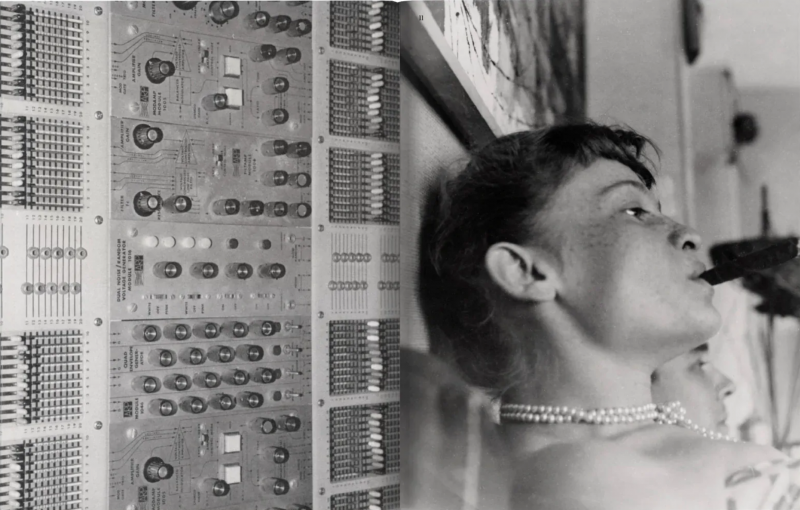E.R. - (1954) And that year, Yves returned with a passion for glossolalia. He had discovered glossolalia, the famous universal language spoken by the apostles when they received the Holy Spirit at Pentecost. It is said that when they received the Holy Spirit, they began to speak, as if drunk, an inarticulate language through which they understood each other perfectly. So that's what Yves brought that year. Of course, he always went into the subject in greater depth each time, and we weren't totally ignorant either. We were familiar with Kurt Schwitters' sonata parlée, we were also familiar with his work (...?...). And on the beach, we all started glossolating in chorus, which was great fun.
P.U. - What did it sound like?
E.R. - A little cacophony! Then all of a sudden the idea came up to simply make held sounds. And quite naturally, as is my function as a musician, I assessed the voices and tuned them in the simplest way, probably a perfect major chord. For non-musicians, something more delicate, like dominant sevenths, would have been more difficult to keep. And we did what was called by the future ... It was Arman who told this anecdote several times, but contrary to what he claimed, and others with him, it was never recorded. So if you ever get a recording of it, you can be sure it's a fake. That's how it was. And it would have given birth to the Monotone symphony...
(...)
E.R. - For me, his only musical work, the Monotone symphony, is like the architecture of air, without being an architect. He created the Monotone symphony without being a musician. The ideas that are there, in the air, belong to those who catch them. The idea was undoubtedly there, in the air, and he caught it, he made it his own. Yves, not being a musician, had asked me to write the score for him. I really didn't want to get involved, because it would have been a tug-of-war, because it was on my turf that he wanted to come. So I referred him to a very good friend of mine, Louis Saguer, a very, very fine musician who lived in Paris. And Louis Saguer later told me how the meeting about the creation of the Monotone symphony had gone. Louis Saguer played extremely elegant, very sophisticated chords on the piano, which matched his musical writing, like the writing of a poet - in fact the graphology of the score that can be seen at the SACEM is by Louis Saguer - and every time Yves said: no, no, that's not it, that's not it. After a while, he got fed up with it, and put in a perfect major chord! And Yves said: that's it, that's it. I've always said that it was the memory of that little experiment on the beach that had been recorded by his ear, where I resolutely hadn't been looking for sophisticated chords. Perhaps I had allowed myself to intervene slightly with my voice, but very slightly so as not to disturb the others. Perhaps it was this memory that made the symphony so monotonous ... And then Louis Saguer tried to put something into it. When the Monotone symphony was premiered, I think it was Galerie Internationale, Louis Saguer was present, at the back of the audience. He wouldn't have signed his name to it. He was Yves's ghostwriter. Pierre Henry also did a version, much later.
P.U. - Speaking of this first version, Yves Klein gave an interview to a Japanese magazine in which he said: ‘In reality, this whole symphony is only a preliminary to the silence-presence that follows, which then exists in us, despite the tangible and noisy world’. These are very oriental and spiritual intuitions, which also link you to Klein's work.
E.R. - I'd say that this is the true nature, the spiritual foundation of his work. And that's clearly expressed. What I was saying earlier, in these discussions which were much more about eliminating unnecessary intellectualism, about expressing the very essence of things. This is very much Yves's way of thinking, there's no doubt about it.
P.U. - Is it the idea of presence, or is it also the idea of awakening to presence?
E.R. - Or from awareness to presence, I would say. Not really an awakening. Of an awakened consciousness, and the integration of a certain formula of profound, underlying unity. It's an admirable phrase, I didn't know it, but it seems to me to sum up Yves Klein's entire work. It's the foundation of his work, whatever medium he used.
extract from an interview with Éliane Radigue by Philippe Ungar, 2007
